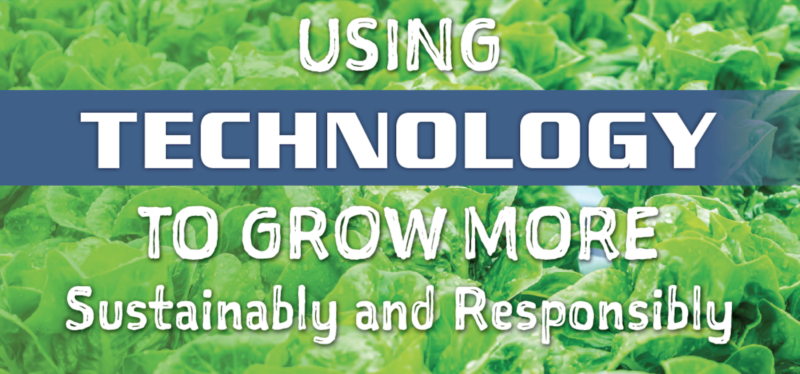
Cover Story: Using Technology to Grow More Sustainably and Responsibly
When a group of financial partners found an abandoned vegetable greenhouse in North Tonawanda, New York, they saw it as the perfect opportunity to pursue their interest in plant-based medicines as a potential business venture. They purchased the 12 ½-acre facility in 2015 and named the company Wheatfield Gardens.
Located about 10 miles north of Buffalo, the Venlo glass greenhouses were constructed in the early 1990s by a local power company called Oxbow Power. The greenhouses were initially operated by Village Farms to grow vine crops, including tomatoes and cucumbers.
“At the time the greenhouses were built, power generation companies seeking to build power plants in the U.S. were required by federal regulations to do something with the excess steam that was generated to produce electricity,” says Paal Elfstrum, CEO at Wheatfield Gardens.
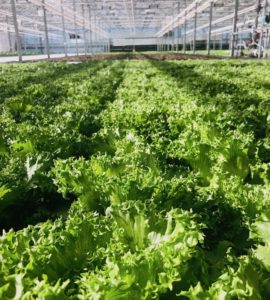
herbs and auto-flowering hemp cultivars of Cannabis ruderalis.
“Many of these power plants were built adjacent to industrial manufacturing sites. Oxbow Power, which owned a 37-acre parcel of land about a mile away from its 55-megawatt power plant, built the greenhouses to be the thermal host for the excess steam generated by the power plant. The steam was piped to the greenhouses to heat the facility.”
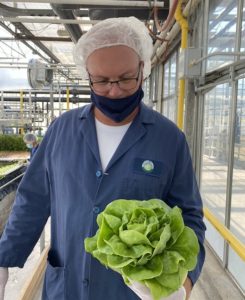
In the late 1990s, the federal regulations were eliminated so Oxbow Power no longer needed to have a thermal host for the excess steam. The utility company eventually lost interest in continuing to maintain the greenhouse. During this time an increasing amount of vine crop vegetables were being shipped into the United States from Canada and Mexico.
“The regulations for U.S. power plants went away in the late 1990s so they no longer needed to have these thermal hosts to operate,” Elfstrum says. “Oxbow Power eventually shuttered the greenhouses in 2012. Because of the economics of commodity tomatoes and cucumbers, the power company could not compete with the imported vegetables coming in from Canada and Mexico.”
INCREASING OPERATIONAL EFFICIENCY
When Elfstrum and his partners acquired the facility in 2015 they initially started with vine crops.
“We made an attempt at growing vine crops to compete in the world of commodity greenhouse crops,” he says. “We had a deal with a local grocery chain to grow eggplants, English cucumbers and beefsteak tomatoes. We were trying to market our crops as the locally grown option.”
Because those crop categories are highly commoditized, he says it was difficult to differentiate their products even though they were locally grown.
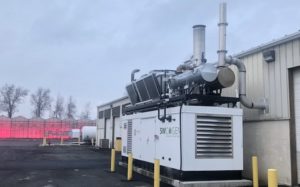
Although Elfstrum and his partners wanted to produce commercially profitable crops, more importantly they wanted to use the greenhouses as a proving ground for their own controlled environment technology.
“Some of my partners came from the on-site power industry, specifically designing microgrids and cogeneration systems is our area of expertise,” he explains. “We used the greenhouses as an opportunity to demonstrate our novel patented technology that optimizes the integration of on-site power production with controlled environment agriculture. Most CEA farms are very energy intensive. We decided to invest in the power infrastructure of the facility to make it very efficient.
“We took an aggressive approach at improving our resource efficiency by using cogeneration and the benefits that come with it, including generating our own heat and electricity. We have consistent power all the time because we run the facility with cogeneration. We can also capture carbon dioxide and deliver it to the plants to increase yields.”
GROWING MORE EFFICIENTLY
While Wheatfield Gardens continues to look for ways to operate more efficiently, the decision was made to transition away from vine crops to focus on higher value crops. Lettuce and herbs were added in 2016 and industrial hemp for cannabidiol (CBD) production began in 2017.
Elfstrum worked with researchers at Cornell University and fellow industry colleagues from the Greenhouse Lighting and Systems Engineering (GLASE) consortium to look at alternative crops. Butterhead lettuce produced in floating rafts became the company’s benchmark crop. The company is also producing multiple varieties of hydroponic lettuce, herbs and auto-flowering hemp cultivars of Cannabis ruderalis.
“Lettuce travels so far to get to East Coast markets with 90% coming from the West Coast,” Elfstrum says. “That travel time doesn’t make sense. They are basically trucking water across the U.S. The flavor also suffers during the long distance transport.”
During the summer Wheatfield Gardens can grow a 300-gram head of lettuce in 30 days. In winter, the crop time increases to 36 days.
In 2018 Wheatfield Gardens installed Fluence dimmable LEDs that offered light spectrum control.
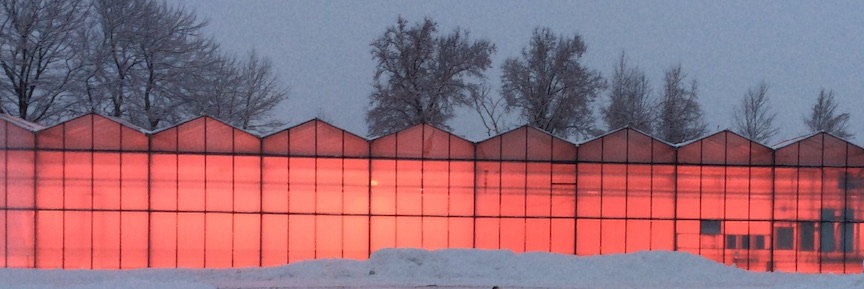
“The LEDs allowed us to compete with other lettuce growers and enabled us to be a consistent supplier to our customers year round,” Elfstrum shares. “The LEDs were more efficient than high pressure sodium as well as being dimmable and controllable. That’s what we wanted because we are trying to be as efficient as possible without sacrificing quality.”
The company also recently upgraded its 500-kilowatt transformer from 500 kilovolt-amperes (kVA) to 2,500 kVa so that more LED lights could be installed.
“We make our own power and carbon dioxide through thermal energy,” Elfstrum says. “This is a perfect site to do different research with GLASE, including lighting, lighting control and supplemental carbon dioxide. We don’t have to worry about power failures because of the grid going down affecting the studies. Our cogeneration system is backed up with a 400-kilowatt diesel generator.”
THE HEMP POTENTIAL
Wheatfield Gardens is growing Cannabis ruderalis, a non-photoperiod species of hemp in deep water culture side-by-side with its lettuce crops.

“This species flowers regardless of the photoperiod and how much light it receives,” Elfstrum says. “It’s a compact plant and finishes in 75 days. We are one of the first legal growers of this hemp crop in New York. We grow for all of the cannabinoids and terpenes except THC. Every cannabinoid except THC is the goal of growing hemp at our farm.
“We take a horticultural approach, where most industrial hemp growers take an agronomical approach where they plant in fields. The plants are growing at such a high density in our greenhouses that 8.8 acres will produce the same amount of plant mass as 20 acres of field-grown hemp while consuming 90% less water than that 20-acre field. From the one hemp crop we are growing per year we produce about 1 pound of CBD-rich material per plant.”
Wheatfield Gardens’ goal is to produce a very clean, food-safe hemp extract.
“We think CBD and cannabinoids in general will eventually become food ingredients and therefore the plants should be grown in a food-safe manner much in the same way as we grow lettuce,” he says. “We process all of the hemp plant. The flowers produce a high-quality hemp extract for companies that are marketing CBD extracts as dietary supplements. Holistik Wellness is a premium-branded CBD product available at Wegmans (a New York-based grocer). We are their exclusive supplier because we can guarantee a clean, pesticide-free raw material. They need that for supply chain security.”
FOCUSED ON LIGHTING EFFICIENCY
For its lettuce crops Wheatfield Gardens aims to achieve a daily light integral (DLI) of 17 moles. When the LEDs were installed the company also installed a light controller.
“The original light controller was very comprehensive, but it was over-engineered for the purpose of controlling the lights and what we wanted it to do,” Elfstrum says. “We recently installed a Candidus light control system that enables us to have tight control over the DLI. We’re measuring how much energy it takes to achieve the DLI on a seasonal basis. We are able to determine if using supplemental light allows us to reach the lettuce head weight we are trying to achieve.”
He says the dimming function on the Candidus controller is a great option because it allows them to money and by not using the lighting when the sun is providing all the light the crops need.
“When the sun emerges and provides the light needed, the Candidus controller reacts to conserve electricity,” he explains. The Candidus controller also has the ability to track trends and enables us to look at lighting use history.”
BENEFITS OF SUPPLEMENTAL CARBON DIOXIDE
As important as it is to provide plants with the optimum daily light integral, Elfstrum says growers can’t overlook the carbon dioxide level needed by plants.<
“We know from growing tomatoes that supplemental carbon dioxide can increase productivity by 30% in the presence of 800 parts per million carbon dioxide,” he says. “We looked at the effect supplemental carbon dioxide had on our hemp plants and cannabinoid production. There was a significant difference in size and vigor of hemp plants that received supplemental carbon dioxide.”
According to Elfstrum, the ability to provide supplemental carbon dioxide is as important as good lighting control in high-density farming. He says, “Carbon dioxide supplementation is one of the deciding factors in terms of making greenhouse and vertical farming successful in years to come.”
Every greenhouse crop grown by Wheatfield Gardens is supplemented with carbon dioxide generated through its cogeneration system.
“When we burn natural gas to produce electricity we capture the carbon dioxide that comes along with the gas combustion,” Elfstrum explains. “We are able to do this at no additional cost. The environmental benefit is we are sequestering the carbon dioxide. Normally it would be released into the atmosphere.
“We are providing carbon dioxide to the plants and generating oxygen as a result. No one can quantify the benefit of that for me yet. We are producing our crops sustainably as much as technology will allow right now. Our goal is to produce as sustainably and responsibly as possible.”
For more information: Contact Wheatfield Gardens, info@wheatfieldgardens.com; www.fifthseasonfresh.com.
WHEATFIELD GARDENS AT A GLANCE
Year Founded: 2015
Headquarters: North Tonawanda, N.Y.
Production Facilities: 12.5-acre Venlo glass greenhouse facility
Employees: 25
Crops: Leafy greens, herbs and industrial hemp for cannabidiol (CBD) production
Customer Base: Wheatfield Gardens markets its leafy greens and herbs under the Pick’d (www.pickdgreens.com) brand name. The products are available at Tops Friendly Markets across the Northeast.
The products are also distributed to smaller local retailers and restaurants. Wheatfield Gardens also participates in the New York State Farm-to-School Program by suppling all of the leafy greens to the Buffalo Public Schools.
Wheatfield Gardens is the exclusive supply chain partner for a CBD brand called Holistik Wellness (www.holistikwellness.com), whose products are available at Wegmans Food Markets along the East Coast.



